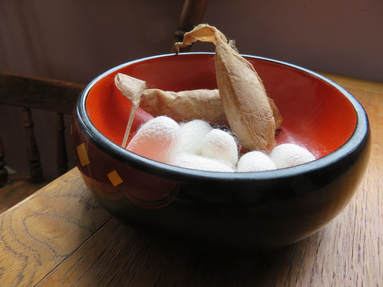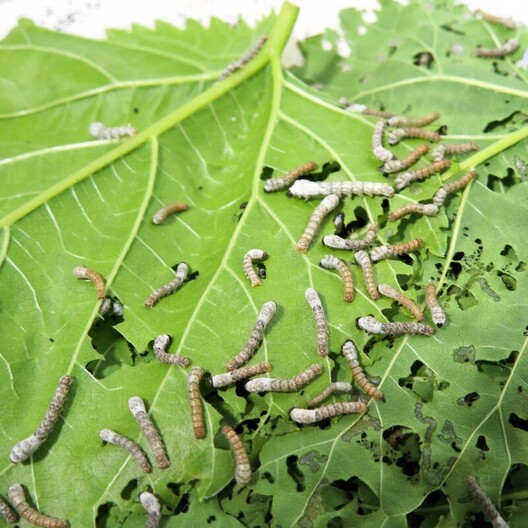|
14/7/2020 Carding Cotton - a pictorial tutorialA quick series of images to show the process of transforming a cotton boll into a puni ready to spin. first published on my old blog Trampled by Geese in 2015
Leave a comment if you want me to make a video or more in-depth tutorial on working with cotton. Meet George George is one of my silkworms. These greedy-samas (sama is the Japanese honorific title added at the end of the name, like 'san' but with more respect) are going to help me transform leaves into cloth. These are my very first silkworms and I want to give a shout out to Peggy at Flourishing Filaments who helped me with the research and found a way to send silkmoth eggs to Canada. At the time of writing, it is legal to import Bombyx mori into Canada and to export from the USA without a fancy certificate (but check with the government before attempting it for yourself because things change). While researching silkworms online, I noticed that a lot of people name their worms. They grow attached to these little guys. I didn't want to feel left out, so I named them. I named all 200 of them George except for the big one, his name is Harold. Click "read more" on the right to ...
11/6/2018 grow your own yarn - in an apartment atlas (wild) and bombyx (domestic) silkmoth cocoons atlas (wild) and bombyx (domestic) silkmoth cocoons Before I moved to the farm, I lived in the city. Right at the heart of downtown, in a cement cube with south facing windows surrounded by other people also living in cement cubes. But living in the city had its advantages. All that concrete and asphalt absorb the heat from the sun and holds onto it. This creates a warmer climate than the rest of the area, bumping us up one or even three climate zones. In the city, we can grow things that we cannot in the surrounding countryside. Banana and palm trees are popular choices - in Canada! What I wish I knew at the time is that we can grow cotton too. Cotton grows in the same condition as tomatoes. Cotton loves the warmth and isn't adverse to being kept in pots. In a pot, you can bring cotton inside for the winter. Another thing the city gives us that I don't have on the farm is limited daylight. Cotton is daylight sensitive so on the farm, I have a challenge getting it to set bolls this far north because our days are just too long. But in the summer, the buildings act as a false horizon, cutting off the sun from the earth early. Warmth plus limited daylength. There are lots of other fibre crops and animals we can grow in the city. Linen can also be grown in pots so long as you don't sow the seeds to densely. Within walking distance of my condo were several mulberry trees on public land. Two of them are in gardens specially designed for public harvest - food forest community gardens. I know more than one person who kept silkworms hidden away in their pet-free apartments (caterpillars don't count as pets, right?). They snuck out each morning, about 5am, to harvest mulberry leaves, being careful never to take too much and to always ask permission first. There was an abundance of wormfood available. There was a great article in Spinn Off a few years back explaining how easy it is to grow silk. It was the same one that introduced me to cotton and got me wondering what non-sheep plants and animals can grow fibre in small spaces. Don't have mulberries, try wild silk moths. There are a hundred or more different kinds of moths that produce silk and chances are some of them are native to your area. These wild silk moths produce various colours and textures of silk and in my opinion, they are even more beautiful than bombyx silk. The best thing about them is if they are native to your area, then their food can be found in abundance. Many wild silkmoths consume a variety of different fodder. The Polyphemus moth that is native to my area eats a dozen different trees, so I don't have to go hunting for mulberries. Wormspit's website is the place to go for more information on Bunnies take up a bit more space than silkworms. Angora or any fluffy bunny produces warm and soft fibre. Comb the bunny each day and spin the fibre into lovely lofty yarn. Wildcrafting fibre like nettles or kudzu is another option. Talk to your local parks department to see what you're allowed to harvest. This is also a good source of dye materials. Of course, if you absolutely must have sheep, you can always try to sneak some on the roof. |
CategoriesAll Airwell Angora Animal Fibre Boring Community Cotton Dryland Farming Dye Etsy Shop Experiments Fibre Prep Finance Flax Frugal Household Management Indigo Linen Local Cloth Mediterranean Climate Natural Dye Permaculture Plant Fibre Sewing Silk Tutorial Urban Fibre Vintage Wildcrafting Archives
February 2022
|
|
Created by Tracy Wandling of One Wing Freelance Graphic Design
|

 RSS Feed
RSS Feed
